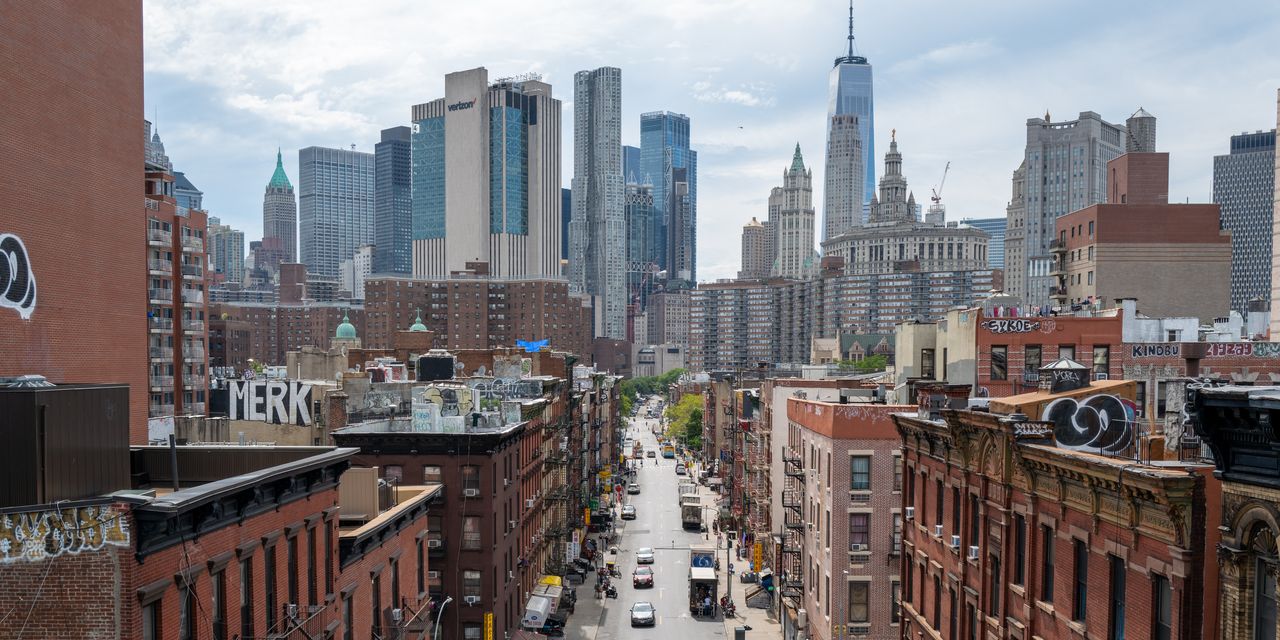Increases in rent prices have settled down since their rapid rise earlier in the pandemic, thanks to more choices on the market and less demand. It’s a trend that will stick around for a while.
Two measures of growth, collected by ApartmentList and
Zillow,
show that asking rents continued to cool in June, compared with year-ago levels. Zillow clocked national rent growth at 4.1% in June, its lowest level since April 2021, while rents gauged by ApartmentList were flat—a level the rental website hailed as a “big milestone” following months of rapid increases in late 2021 and early 2022.
Part of the slowdown is weaker demand, says Christopher Salviati, a senior economist at ApartmentList. Rents are 24% more expensive than in January 2021, Salviati said. “Renters are finding that their money isn’t going as far,” Salviati said via email—adding that inflation, consumer confidence, and recession fears don’t help. “All of this is leading to more cautious behavior when it comes to household formation, meaning less rental demand.”
Increasing rental supply is also behind the slowdown. Construction in buildings with five or more units has been completed at a higher rate than average since September 2022, Census data show. Completions in February rose to a seasonally-adjusted annual rate of 542,000, the measure’s highest level since 1987. Those units will eventually be available, adding to supply.
And there’s more coming: there was a record level of such units under construction in May, seasonally-adjusted Census data show. The supply of rentals under construction means any growth in prices is likely to remain tempered. Those units will hit the market over the next one to two years, according to Zillow.
Single-family homes built as rentals also are coming to the market. In the fourth quarter of 2022, 8.8% of all new construction started on single-family homes was for rental stock, a record high, according to a BTIG analysis of nearly five decades of Census data. That share remained high to start the year, the analysis shows.
There are questions about what the rental landscape means for the broader housing market, says Carl Reichardt, a BTIG analyst covering home builders. One question is how the cost of renting a home compares with that of owning a home, the analyst says, citing the increase in single-family rental construction.
“If there’s an excess of competition in that business and rents fall, and renting a single-family home becomes potentially even more attractive than owning it, that creates competition for the builders,” says Reichardt. The shares of public builders have been on a tear this year as demand has picked up for new homes. New home sales in May spiked, even as existing-home sales remained tepid.
Despite the gain in new home sales, buyer sentiment has remained largely sour: 22% of respondents to Fannie Mae’s National Housing Survey in June said it was a good time to buy—higher than all-time low levels of 16% late last year, but well below the historic average of 57%. Respondents were more positive on the prospects for sellers, with 64% saying it was a good time to sell a home.
Another unknown is whether slowing or declining rents lead landlords to list for sale homes they have previously rented, says Reichardt. The ownership of single-family rentals by big institutional investors and online short-term rental listing platforms are relatively new developments, he says. “These are two new dynamics that have impacted the amount of supply on the market, and ways to monetize shelter capacity, that we haven’t seen before,” he says. “We’re not seeing this in any kind of enormous way, but it’s something to watch.”
Write to Shaina Mishkin at [email protected]
Read the full article here







